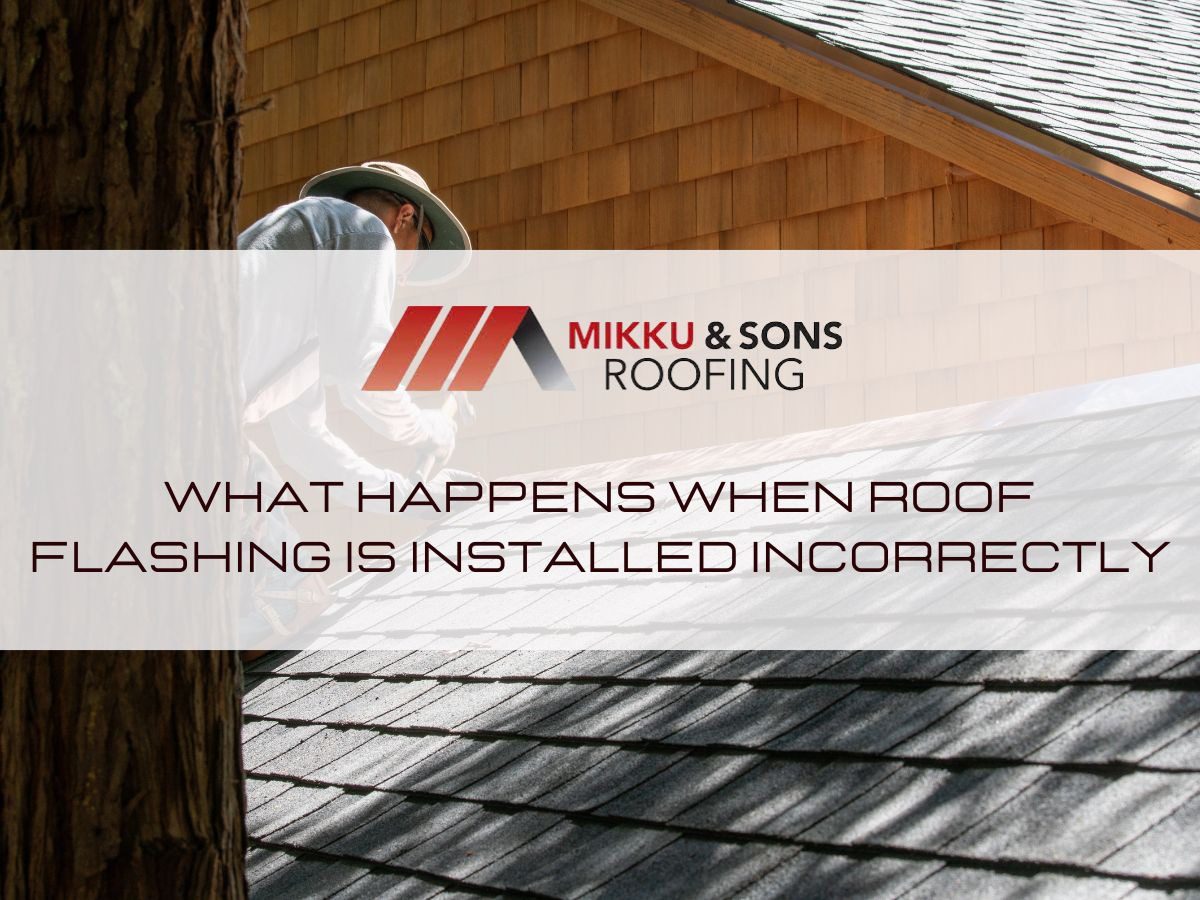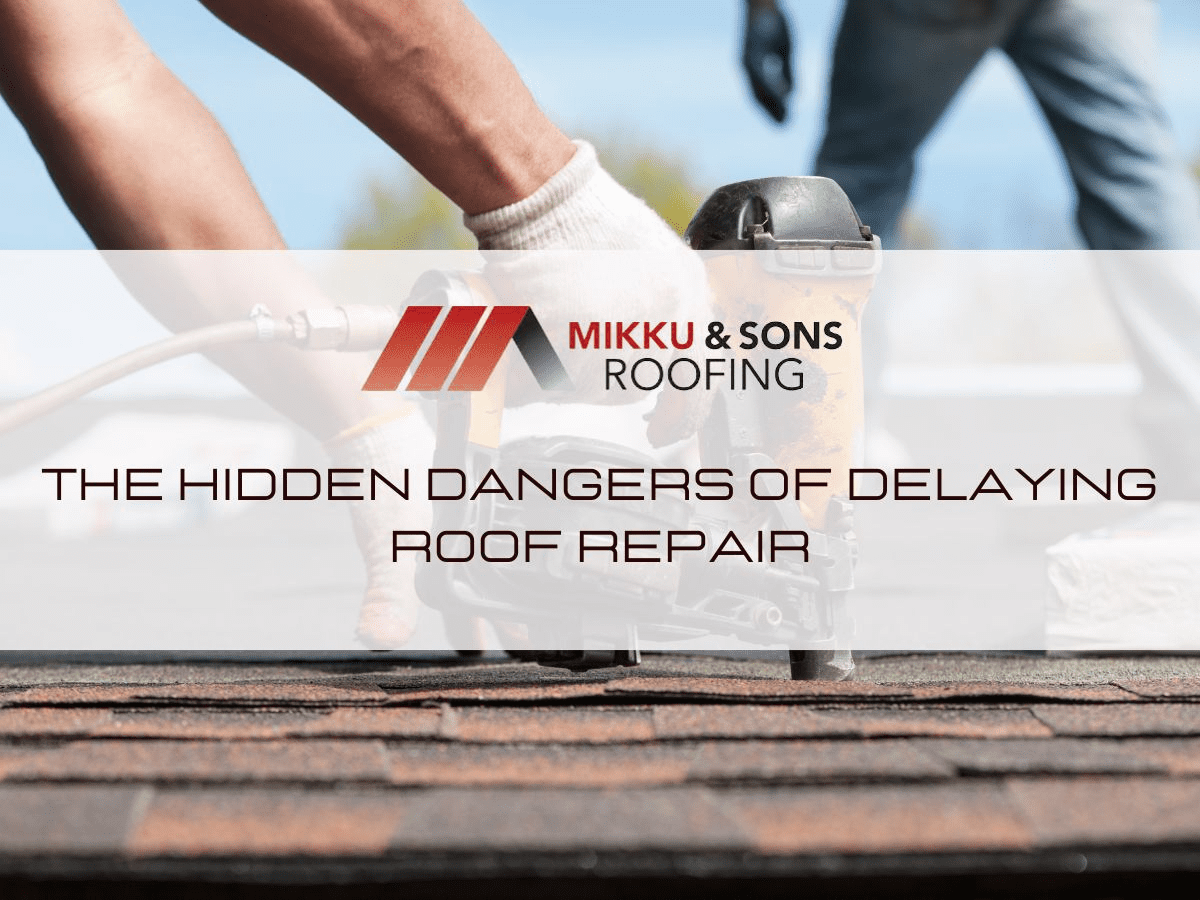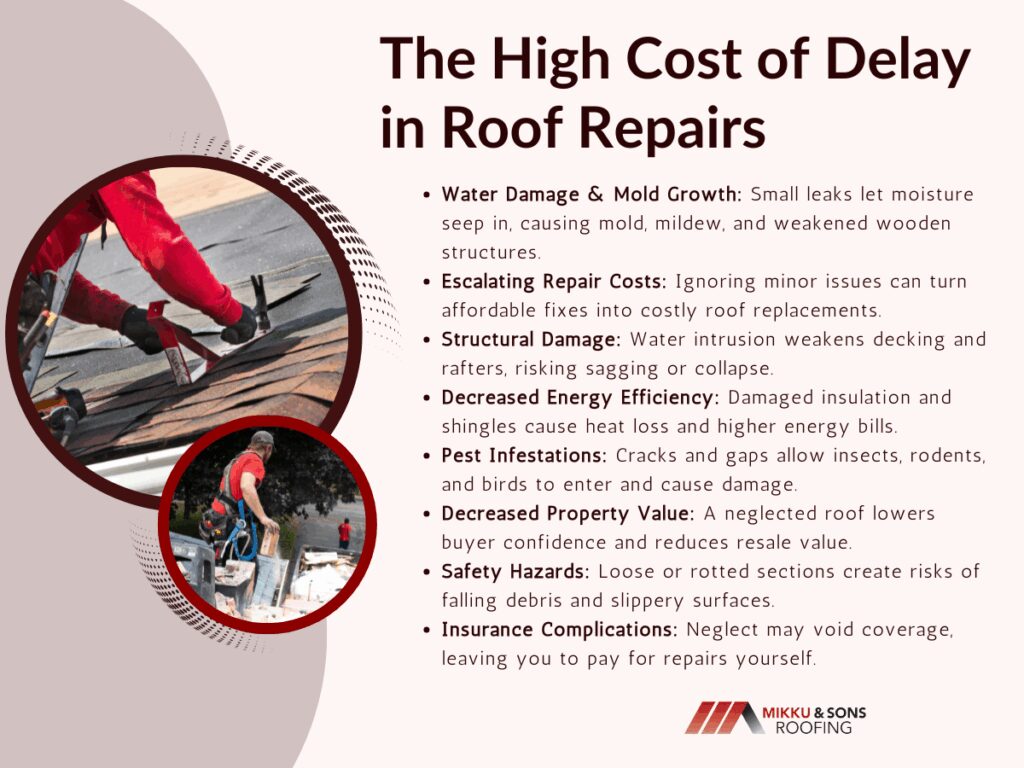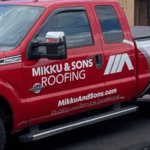

Delaying roof repair can set off a chain reaction of problems that go far beyond simple cosmetic wear, it can invite water leaks, cause hidden structural deterioration, trigger mold growth, and lead to skyrocketing repair bills. What might start as a loose shingle or a small leak can quickly escalate into widespread damage that compromises the safety, comfort, and long-term value of your home. The longer these issues are left unattended, the greater the risk of severe safety hazards and costly structural failures.
You know it’s time to replace your roof when there’s major shingle damage, frequent leaks, sagging areas, or it has reached the end of its lifespan. This article also explores hidden interior damage, prevention tips, safety hazards, and when full replacement is the best option.
Even minor roof issues can quickly escalate into costly, dangerous problems when left unchecked. A neglected roof not only impacts your home’s appearance but can also compromise its structure, energy efficiency, and safety.

A small leak can allow water to seep into the attic, walls, and insulation, creating the perfect breeding ground for mold and mildew. Over time, the moisture can weaken wooden structures and lead to costly repairs that go beyond the roof itself.
Delaying a $200 shingle replacement can turn into a $10,000 roof overhaul if the damage spreads. Early repairs are far more affordable than major replacements caused by prolonged neglect.
Water intrusion can deteriorate roof decking, rafters, and joists, compromising your home’s stability. In severe cases, parts of the roof may sag or collapse, creating dangerous living conditions.
Damaged shingles, underlayment, or insulation allow heat to escape in winter and enter in summer. This forces your heating and cooling systems to work harder, increasing monthly energy bills.
Cracks, gaps, and missing shingles provide easy access for insects, rodents, and birds. Once inside, pests can cause further structural damage and create unsanitary conditions.
A damaged roof is a major red flag for potential buyers, often leading to lower offers or failed inspections. Homes with neglected roofs can linger on the market longer and sell for significantly less.
Loose shingles, weakened decking, or rotted beams can pose a risk of falling debris or sudden collapse. Additionally, wet and moldy areas increase the risk of slips and falls during maintenance.
If an insurer determines that damage resulted from neglect, your claim may be denied. This could leave you paying the full cost of repairs or replacement out of pocket.
Delaying roof repair may feel like a way to save money now, but it often results in much higher costs, potential safety hazards, and lasting damage to your home’s value. Addressing problems early is the smartest and most cost-effective approach.
Knowing when to replace your roof can save you from costly damage and dangerous living conditions. While repairs can extend your roof’s life, certain signs indicate that replacement is the smarter, long-term solution.
Most asphalt shingle roofs last 20–25 years, while metal, tile, and slate can last much longer. If your roof is nearing or past its expected lifespan, it’s wise to plan for a replacement before serious issues develop.
Curling, cracking, missing, or loose shingles are signs of advanced wear. If large sections are damaged, repairs may be less cost-effective than a full replacement.
Multiple leaks or recurring water intrusion often mean the roofing system’s waterproofing has failed. At this stage, patching individual spots is unlikely to solve the problem.
A sagging roof indicates compromised structural integrity, often due to prolonged water damage. This is a serious safety hazard that requires immediate replacement.
If you can see sunlight coming through the roof boards, there are gaps or holes in the structure. This not only invites water in but also reduces your home’s energy efficiency.
Hail, high winds, and falling debris can cause widespread roof destruction in a single event. If more than 30% of your roof is damaged, replacement is usually the most practical solution.
While moss can be cleaned, heavy growth often indicates moisture retention and shingle deterioration. Persistent moss problems may require more than just surface treatment.
Recognizing these warning signs early can help you avoid sudden roof failure, unexpected costs, and safety hazards. If several of these symptoms are present, consulting a roofing professional for a full replacement estimate is your best course of action.
A damaged roof isn’t just a maintenance issue — it can present serious safety risks for both residents and anyone performing repairs. Ignoring these hazards can lead to injuries, property damage, and even life-threatening situations.
Severely weakened decking or framing can no longer support the roof’s weight, especially after heavy rain or snow. This structural failure could result in a partial or total collapse, endangering anyone inside.
Loose shingles, flashing, or rotted wood can break away and fall during high winds or storms. These falling materials pose a serious risk to people, pets, and vehicles below.
Moss, algae, or accumulated moisture can make roof surfaces slick. This increases the risk of slips and falls for anyone walking or working on the roof.
Water leaks can infiltrate electrical systems, creating short circuits that could spark a fire. In older homes, damaged wiring hidden in attics can be especially vulnerable.
Rodents, insects, or birds entering through roof gaps can damage insulation, chew wiring, and spread diseases. Some pests, like wasps, can also create aggressive nests in the attic.
In summary, a damaged roof can endanger health and safety in more ways than most homeowners realize. Addressing roof problems promptly helps eliminate these hazards before they cause harm.
Proactive maintenance is the key to avoiding costly roof repairs or full replacements. By catching small issues early, you can extend your roof’s lifespan, improve energy efficiency, and protect your home’s value.
Regular care and prompt action can prevent minor roof problems from spiraling into major repairs. A consistent maintenance routine is the most cost-effective way to keep your home safe and dry.
While repairs can address isolated problems, there are situations where replacing the entire roof is the only cost-effective and long-term solution. Understanding these scenarios can save you from wasting money on temporary fixes.
If more than 30% of your roof is damaged, repairs may only delay the inevitable. A full replacement ensures consistent protection and prevents recurring issues across different sections.
When a roof has reached or exceeded its expected service life, materials naturally weaken and lose effectiveness. In this case, replacing the roof provides a fresh start with renewed durability.
If the same problem area requires multiple repairs over a short period, the underlying system may be compromised. Replacing the roof resolves root issues rather than patching symptoms.
Severe water damage, sagging, or rotting in the roof decking or framing can’t be fixed with surface repairs. A replacement is necessary to restore the roof’s structural integrity.
Extreme weather events, such as hurricanes or large hailstorms, can cause widespread, deep-seated damage. In such cases, replacing the roof ensures it meets modern safety and performance standards.
Roof replacement is sometimes the only logical choice to protect your home, even if it requires a larger upfront investment. By recognizing when repairs are no longer enough, you can avoid ongoing costs and ensure lasting peace of mind.
When a roof is damaged, the harm isn’t limited to what you see from the outside. Leaks and structural weaknesses often lead to hidden interior problems that can compromise your home’s safety, comfort, and value.
Water seeping through the roof can leave yellow or brown stains on ceilings and walls. Over time, this moisture can cause paint to peel, drywall to bubble, and even lead to mold growth.
Wet insulation loses its ability to regulate temperature effectively, increasing energy costs. Persistent dampness can also cause insulation to clump and deteriorate, requiring full replacement.
Moisture from roof leaks creates ideal conditions for mold and mildew, which can spread inside walls, ceilings, and HVAC systems. This not only damages materials but can also cause respiratory issues.
Water leaks can reach electrical wiring in attics or walls, causing short circuits or fire risks. Even small leaks can lead to dangerous electrical failures if left unresolved.
Continuous water exposure can warp floorboards, framing, and other structural wood components. This kind of hidden rot often remains undetected until major repairs are needed.
Roof neglect can trigger a chain reaction of hidden interior damage that’s costly and dangerous to fix. Prompt roof maintenance protects not only your home’s exterior but also everything inside.
A healthy roof is vital for protecting your home from damage, safety risks, and costly repairs. Even small issues can quickly lead to major problems like leaks, mold, and reduced property value. Prompt repairs help extend your roof’s life and keep your home safe and efficient.
Knowing when to repair versus replace is key to avoiding unnecessary expenses. By watching for warning signs, preventing damage early, and acting fast when repairs aren’t enough, you can protect your investment and ensure lasting security.
